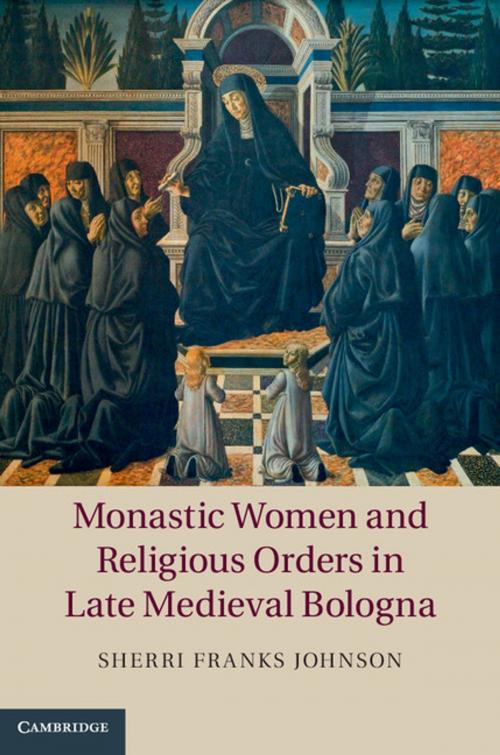Monastic Women and Religious Orders in Late Medieval Bologna
Nonfiction, History, European General, Religion & Spirituality| Author: | Sherri Franks Johnson | ISBN: | 9781107721234 |
| Publisher: | Cambridge University Press | Publication: | April 10, 2014 |
| Imprint: | Cambridge University Press | Language: | English |
| Author: | Sherri Franks Johnson |
| ISBN: | 9781107721234 |
| Publisher: | Cambridge University Press |
| Publication: | April 10, 2014 |
| Imprint: | Cambridge University Press |
| Language: | English |
Sherri Franks Johnson explores the roles of religious women in the changing ecclesiastical and civic structure of late medieval Bologna, demonstrating how convents negotiated a place in their urban context and in the church at large. During this period Bologna was the most important city in the Papal States after Rome. Using archival records from nunneries in the city, Johnson argues that communities of religious women varied in the extent to which they sought official recognition from the male authorities of religious orders. While some nunneries felt that it was important to their religious life to gain recognition from monks and friars, others were content to remain local and autonomous. In a period often described as an era of decline and the marginalization of religious women, Johnson shows instead that they saw themselves as active participants in their religious orders, in the wider church and in their local communities.
Sherri Franks Johnson explores the roles of religious women in the changing ecclesiastical and civic structure of late medieval Bologna, demonstrating how convents negotiated a place in their urban context and in the church at large. During this period Bologna was the most important city in the Papal States after Rome. Using archival records from nunneries in the city, Johnson argues that communities of religious women varied in the extent to which they sought official recognition from the male authorities of religious orders. While some nunneries felt that it was important to their religious life to gain recognition from monks and friars, others were content to remain local and autonomous. In a period often described as an era of decline and the marginalization of religious women, Johnson shows instead that they saw themselves as active participants in their religious orders, in the wider church and in their local communities.















